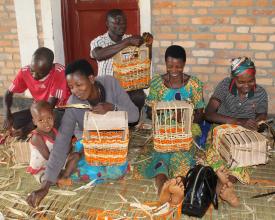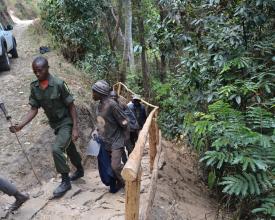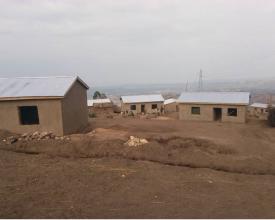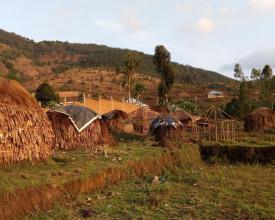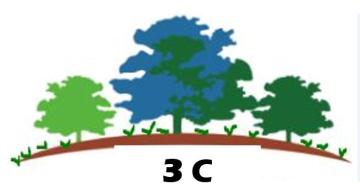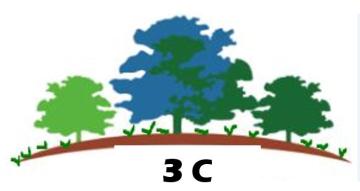
Involvement of Batwa indigenous peoples in the management of the Bururi nature reserve
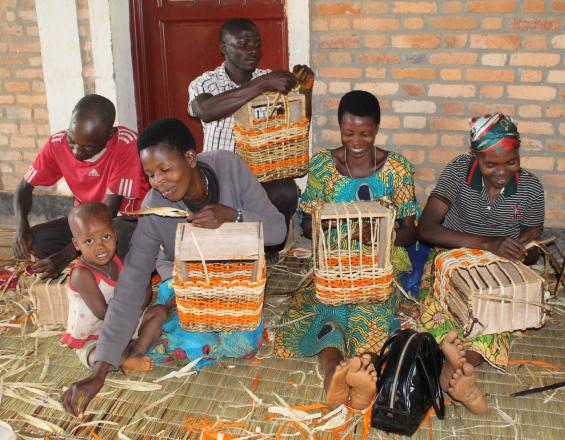
The approach was developed in 2017 and beyond. It consists of involving Burundi's Batwa indigenous peoples in the management and development of the Bururi forest nature reserve. Tangible results on biodiversity have been produced through a significant improvement in the management efficiency of this protected area. In addition, positive effects and impacts have been generated thanks to the improvement in their living conditions.
Context
Challenges addressed
Covering an area of 3,300 ha, the Bururi Forest Nature Reserve is a tropical mountain rainforest rich in species of flora and fauna, many of which are endemic to the Albertine Rift region. It is a small island of forest surrounded by completely different ecosystems. Around this reserve, 28 Batwa households have been landless and homeless since 1996 as a result of the effects of war, and have depended essentially on quarrying in and around the reserve, logging and animal trapping for their survival. Since the Batwa had no other alternative for survival than to exploit the reserve's natural resources, they contributed significantly to the degradation of the ecosystem's natural resources.
Location
Process
Summary of the process
The Batwa's involvement in the reserve's management activities has enabled them to earn money, make small savings, buy land, build houses, and consequently improve their living conditions as well as those of biodiversity: in short, a win-win situation.
Building Blocks
Participatory management of natural resources
In 2017, 28 Batwa households (indigenous peoples of Burundi) were involved in activities to maintain 33 km of boundary and 15 km of internal tracks, open 2 km of tourist trails, fight bush fires and poaching.
Enabling factors
- Mutual trust between the Batwa community and reserve managers.
- Commitment to ongoing dialogue between the protected area's conservation services and the Batwa community.
- Transparency in the management of funds allocated to the community's involvement in reserve management activities.
- Empowering the Batwa is a mark of respect and esteem that motivates them to become more involved in protecting the reserve.
Lesson learned
Biodiversity management requires a holistic, ecosystem-based approach.
Nature conservation cannot be successful without taking into account the role of riparian communities.
Improving living conditions for Batwa indigenous peoples
The collective savings made by the Batwa were used to buy 3 ha of property. The community itself negotiated the cost of this property. It was the community that organized itself to share the land equally. It was the community itself that committed to making bricks for their homes. The partners came to the aid of their commitment by granting them sheet metal and cement. In this way, their situation is closely linked to the effective protection of the Bururi Forest Nature Reserve.
Enabling factors
- Identification of the real major problem and identification of the real solution.
- Empowerment of beneficiary communities
- Consensus decision-making
- Ongoing communication
- Mutual respect
Lesson learned
All problems can be solved through dialogue. Lack of dialogue, on the other hand, is a source of all kinds of conflict.
Dialogue creates a win-win situation for both biodiversity and communities.
Impacts
This approach of involving the Batwa in the management of the Bururi forest nature reserve has borne fruit:
(i) this Batwa community now lives on its own land (3 ha) and in decent houses acquired with the fruits of their labor. This is the first time in Burundian history that Batwa have bought property with their own money saved in a bank.
(ii) This community has access to drinking water, which means it is in good physical health at this time of the Covid 19 pandemic.
(iii) This approach has resolved several conflicts at once: the social conflicts between the Batwa and their neighbors have been definitively settled thanks to the acquisition of the new property.
(iv) This experience has definitively transformed this community into a friend of the reserve.
(v) The governance of this area has clearly evolved, as a multi-stakeholder management committee has been set up. Management decisions are now based on consensus.
(vi) A $77,000 fund has been injected into the village to help with reserve development work and to develop solidarity savings.
This reserve is cited as a model of community conservation, as evidenced by the results of the IMET (integrated management effectiveness tool) management effectiveness assessment.
Beneficiaries
This initiative involved 130 members of 28 Batwa households living on the edge of the Bururi forest nature reserve, the inhabitants of the town of Bururi and the Bururi reserve management team.
Sustainable Development Goals
Story
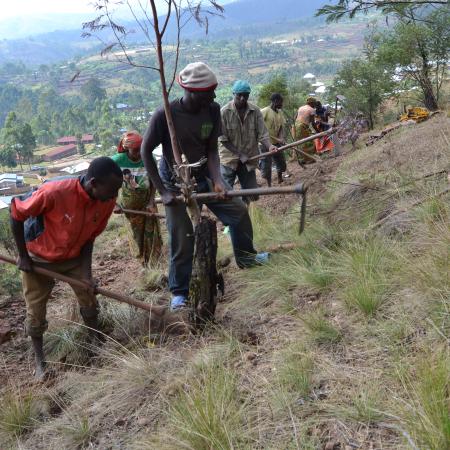
In 2017, overwhelmed by the breakneck pace of degradation of this protected area, as the person in charge of protected areas in southern Burundi including the Bururi Nature Reserve, I demonstrated a great spirit of creativity by involving the 28 Batwa households in the development, management and protection activities of the Bururi Forest Nature Reserve. Involving a total of 130 people, including 26 men and 27 women of working age, these indigenous people were involved in the upkeep of the boundary, internal penetration paths and tourist trails. They also took part in surveillance work to combat bush fires, illegal logging and hunting.
This involvement earned them an incentive of $2 per person per day of service. The community itself decided to take 60% of this daily incentive and save 40% in a joint savings account. After 17 months of involvement, the community had saved 24,034,500 fbu ($12,000). They used these savings to buy 3 ha of land, which they shared equally. The rest was used to build decent houses with bricks and metal sheets, and to draw a drinking water supply line.
